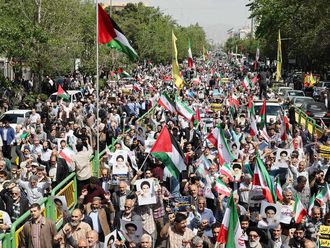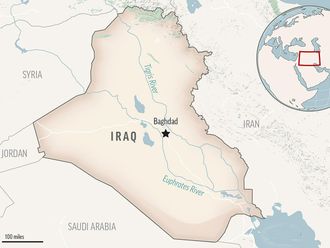
Tehran: Iran said Monday it had launched a live monkey into space, seeking to show off missile systems that have alarmed the West because the technology could potentially be used to deliver a nuclear warhead.
The Defence Ministry announced the launch as world powers sought to agree a date and venue with Iran for resuming talks to resolve a standoff with the West over Tehran’s contested nuclear programme before it degenerates into a new Middle East war.
Iran earlier in the day denied media reports of a major explosion at one of its most sensitive, underground enrichment plants, describing them as Western propaganda designed to influence the nuclear talks.
Reuters has been unable to verify reports since Friday of an explosion early last week at the underground Fordow bunker that some Israeli and Western media said wrought heavy damage.
“The false news of an explosion at Fordow is Western propaganda ahead of nuclear negotiations to influence their process and outcome,” IRNA quoted deputy Iranian nuclear energy agency chief Saeed Shamseddin Bar Broudi as saying.
The Defence Ministry said the space launch of the monkey coincided “with the days of” the Prophet Mohammad’s [PBUH] birthday, which was last week, but gave no date, according to a statement carried by the official news agency IRNA.
The launch was “another giant step” in space technology and biological research “which is the monopoly of a few countries”, the statement said.
The small grey monkey was pictured strapped into a padded seat and being loaded into the Kavoshgar rocket dubbed “Pishgam” (Pioneer) which state media said reached a height of more than 120km.
“This shipment returned safely to Earth with the anticipated speed along with the live organism,” Defence Minister Ahmad Vahidi told the semi-official Fars news agency. “The launch of Kavoshgar and its retrieval is the first step towards sending humans into space in the next phase.”
There was no independent confirmation of the launch.
The West worries that long-range ballistic technology used to propel Iranian satellites into orbit could be put to use dispatching nuclear warheads to a target.
Bruno Gruselle of France’s Foundation for Strategic Research said that if the monkey launch report were true it would suggest a “quite significant” engineering feat by Iran.
“If you can show that you are able to protect a vehicle of this sort from re-entry, then you can probably protect a military warhead and make it survive the high temperatures and high pressures of re-entering,” Gruselle said.
The monkey launch would be similar to sending up a satellite weighing some 2,000kg, he said. Success would suggest a capacity to deploy a surface-to-surface missile with a range of a few thousand kilometres.
Michael Elleman, a missile expert at the International Institute for Strategic Studies think-tank, said Iran had demonstrated “no new military or strategic capability” with the launch.
“Nonetheless, Iran has an ambitious space exploration programme that includes the goal of placing a human in space in the next five or so years and a human-inhabited orbital capsule by the end of the decade,” Elleman said. “Today’s achievement is one step toward the goal, albeit a small one.”
The Islamic Republic announced plans in 2011 to send a monkey into space, but that attempt was reported to have failed.
Nuclear-weapons capability requires three components - enough fissile material such as highly enriched uranium, a reliable weapons device miniaturised to fit into a missile cone, and an effective delivery system, such as a ballistic missile that can grow out of a space launch programme.
Iran’s efforts to develop and test ballistic missiles and build a space launch capability have contributed to Israeli calls for pre-emptive strikes on Iranian nuclear sites and billions of dollars of U.S. ballistic missile defence spending.












